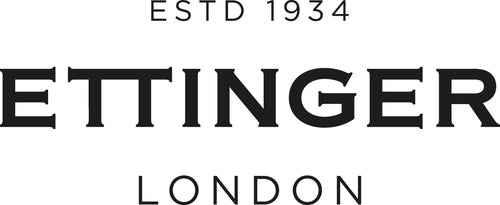Meet Gary Billingham, Ettinger's main pattern and sample maker, but also factory manager who joined the company at 16 and has remained a vital member of the team for 45 years. We have asked him a couple of questions about his journey with Ettinger.

How did you start working in the leather industry?
Gary originally joined the factory in 1979 for a temporary role. At the time, his mother was a press cutter and was the one to introduce him to the leather industry. Although his contract was temporary, he quickly discovered he liked working with leather and was pretty good at it so he decided to stay.
“I had a good attention to detail and my eyesight was good so I made a good start – I was amazed that it could take 20 to 30 different cuts to make one wallet.” he says.
How did you get where you are today?
When he started, Gary was very eager to learn and understand everything that went in the production process of leather accessories.
“I liked the working environment and as I lived locally, my boss started giving me the keys to open after about six months and then started to teach me the ropes. I began learning how to calculate prices and sort out the materials and over the years I have had a go at every process in the factory. Other than working on the sewing machines, which I have tried but I don’t really like, I’ve done everything else. I was taught how to pattern cut and understand technical drawings and diagrams. It took me years to learn and I’m still learning now. After eight or nine years I became a manager.”

How did things changed when Robert took over his father?
In the 1980s, Robert Ettinger took over from his father Gerry and became CEO of Ettinger. Robert really wanted to take Ettinger's pieces worldwide, so considerable investments were made over the years to maintain and upgrade the factory, as well as train the staff, to produce the superior quality Ettinger is known for.
Gary says: “Robert moved the factory onto a different level. You work for the marketplace you’re in and when we started to work for Japanese customers, the quality was out of this world.”
“We did things we had never done before and in new ways to get a new level of perfection. When you make things predominantly by hand and with natural raw materials, like we do, there are always small variances. But Japanese customers only like the best quality and consistency. The level of quality is what we are known for. That means starting with the very best raw materials that you can and ensuring an incredible attention to detail right through the process, every time.”
What is your favourite thing about working at Ettinger?
Gary is at the heart of our product development, working alongside Robert and our designers to create new pieces.
“Our production evolves with subtle changes and refinements but it is also about reinventing our signature styles,” he says. “We started to use a goat skin leather which we haven’t used for 30 years. My role is about seeing what a designer wants and making that a reality, interpreting their vision and transforming it into something that actually works. I get a real buzz out of that, starting with a blank page and creating something that sells.”

What are the changes you have seen in all your years working at Ettinger?
Since Gary started, social media and smartphones emerged, improving communication between the Walsall factory and the London office.
“What has changed things significantly is digital communication,” he says. “When we’re developing new products, we can take a picture and send it straight to the head office in London or a customer on another side of the world, to check that’s how they are expecting it to turn out. It sounds silly but sometimes with the colour of cottons we use, it can be better to be a shade lighter or darker than the leather instead of properly matching it. Now you can make those changes and get feedback instantly.”
We have also updated some of the machines over the years to perfect our production and ensure the high standards.
“The machinery has improved – the presses are hydraulic now and the sewing machines are more efficient, for example – but mainly we have been making small changes and refinements to the way we do things, which is what we do best.”

"I came to help out for a few weeks and now I'm still here 45 years later. There's definitely something in that."



